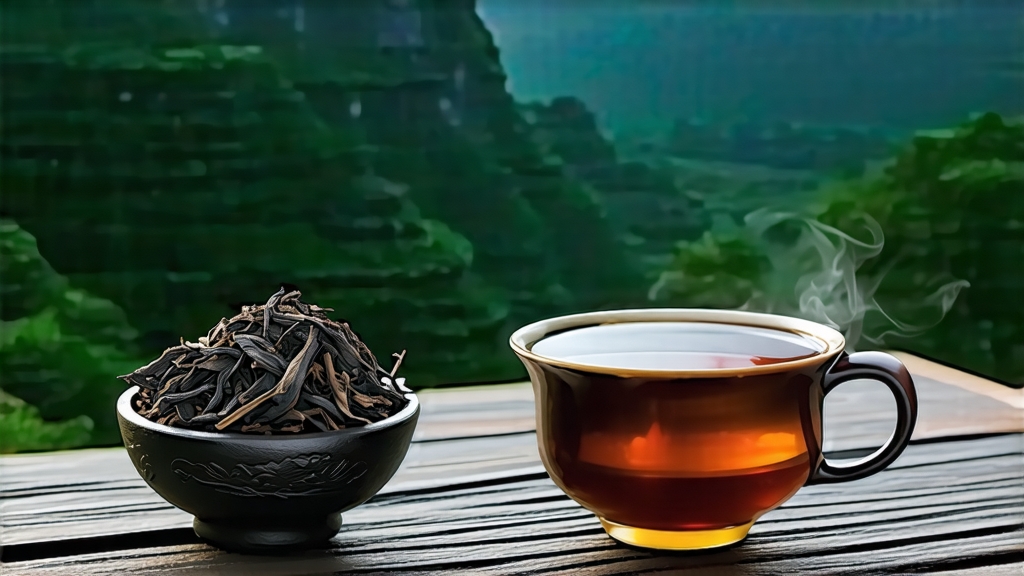
Wuyi Da Hong Pao—often translated as “Big Red Robe”—is the most mythic of all Chinese oolongs. Legends say that Ming-dynasty scholars, cured by its infusion, draped their crimson imperial robes over the six mother bushes that still cling to a narrow fissure on Jiulongke Cliff. Whether apocryphal or not, the tale captures the reverence this tea commands: it is simultaneously medicine, poetry, and liquid geology.
Geography is the first chapter of its story. The Wuyi Mountains of northwest Fujian form a UNESCO dual heritage site where Danxia sandstone weathers into steep gorges, mineral-rich seams, and a microclimate trapped by perpetual mist. Day-night temperature swings of 15 °C slow leaf growth, condensing amino acids and polyphenols into the “rock rhyme” (yan yun) that connoisseurs chase—a lingering, cooling sensation that tastes of wet stone, orchid, and roasted stone-fruit.
Da Hong Pao is not a single cultivar but a stylistic family. At the apex are the original Qi Dan and Bei Dou cuttings traced to the 350-year-old mother trees; only 20–30 g of this “pure” Da Hong Pao are auctioned yearly, fetching prices higher than gold. Far more common are commercial blends that marry selected Wuyi cultivars—Rou Gui for spice, Shui Xian for body, Qi Lan for aroma—then re-fire them to mimic the mother tree profile. Finally, there are “new family” clonal gardens of Wuyi #1 and Wuyi #2, bred for consistency yet still required to show yan yun to earn the name.
Crafting Da Hong Pao is a two-week choreography of stress and rest. Picking occurs in late April when three half-mature leaves still carry a purple edge. Sun-withering on bamboo mats lasts exactly 45 minutes; the leaf must lose 10 % moisture yet remain cool to the touch. Indoor shaking in rattan drums follows, bruising the margins so oxidation proceeds from the edge inward, creating the signature “green leaf with red border.” Oxidation is arrested at 30–40 %—halfway between green and black—by a 280 °C tumble in electric woks that lasts less than three minutes. The most critical step is charcoal roasting: low-temperature baking over local lychee-wood embers repeated two to four times across three months. Each cycle drops the moisture by 3 % while caramelizing sugars and fusing mineral notes into the leaf skeleton. A master roaster judges readiness by ear: the rustle of leaves in a bamboo sieve should sound like “mountain wind over pine needles.”
To brew Da Hong Pao well is to negotiate between fire and rock. Begin by pre-heating a 120 ml Yixing teapot with 95 °C water; the purple clay’s porous body tames charcoal edges while amplifying yan yun. Use 6 g of leaf—roughly one heaping tablespoon—rinsed for five seconds to wake the twisted stripes. The first formal infusion, 10 seconds at 98 °C, releases a bright top note of narcissus and roasted apricot. Subsequent steeps lengthen by five-second increments; by the fifth infusion the liquor turns deep amber and the aroma flips from floral to cacao nib and wet slate. A quality Da Hong Pao endures nine infusions before its mineral spine collapses.
Professional cupping follows a stricter ritual. Five grams of leaf are brewed in a 110 ml white porcelain gaiwan at 100 °C for two minutes. The liquor must present three layers: an immediate honeyed fragrance (gan), a mid-palate surge of rock-mineral astringency that vanishes into sweet salivation (sheng jin), and a lingering coolness at the back of the throat (hui gan). Faults are unforgiving: scorched notes indicate over-roasting, flat body suggests low-elevation leaf, and sourness betrays rushed oxidation.
Storage is the final guardian of value. Unlike pu-erh, Da Hong Pao does not improve with age; its aromatic esters volatilize and the charcoal mellows. Vacuum-sealed tins flushed with nitrogen and kept below 25 °C can preserve peak flavor for 18 months. Once opened, re-roasting every six months at 80 °C for 30 minutes revives the bouquet, a service still offered by old tea shops in Wuyi City.